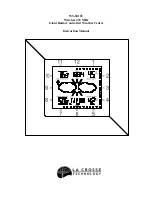
Exalt Installation and Management Guide
EX-i Series FDD Digital Microwave Radios
202675-005
23
2011-08-30
•
IP Mask = 255.0.0.0
•
IP Gateway = 0.0.0.0
•
Administration password = password (or ‘admin’)
•
User password = password (or ‘user’)
•
VLAN disabled
To perform a reset to critical factory settings:
1
Remove power.
2
Hold the
RMT
button on the front panel while applying power.
Continue to hold the
RMT
button through the entire boot cycle (approximately 45 seconds).
The front-panel LEDs toggle during the boot cycle.
3
Release the
RMT
button when LED behavior stabilizes.
Antenna/Transmission System
This section provides guidance to mounting and connecting the RF transmission system, which
consists of the antenna, RF cabling, and RF lightning arrestors. Consult the manufacturer's instructions
for proper mounting, grounding, and wiring of these devices, and for definitive direction. These
manufacturer's instructions supersede any information in this section.
Initial Antenna Mounting
The antenna must be an exact model recommended by the path and site planning engineer(s). Mount
the antenna at the proper height, mast/mounting location and polarization orientation as determined by
the path and site planning engineer(s). The model type, location, and orientation of the antenna is
critical with respect to achieving proper path clearance, as well as to mitigate external or self-
interference from nearby or collocated systems operating in or near the same frequency band.
The antenna structure must be secure and safe with respect to the mounting of the antenna,
transmission system weight, radio housing, and the combined weight of any personnel that may climb
or attach to the structure.
The combined weight of items and forces on the structure must be carefully considered in the design
and construction of the structure. This must include the weight bearing on the structure in the highest
wind conditions possible in the region, and with respect to all objects affixed to the structure.
If additional objects are affixed to the structure in the future, it may be important to evaluate both the
mechanical impact of these planned additions (with respect to wind and weight loading), as well as the
potential impact to RF interference and frequency coordination (if additional radio equipment is
anticipated). This is especially important if future equipment is likely to operate within the same
frequency band.
Once the antenna is mounted, cabled, and aligned, your goal is to never require modification. This
prior planning is important in the path and site planning stages and in construction of the antenna
structure.
Follow the antenna manufacturer’s instructions for mechanical mounting of the antenna. Ensure that
there is enough room around the antenna for alignment activities (moving the antenna in vertical and
horizontal arcs), and for the RF transmission line to connect to the antenna connector unobstructed and
within the specified bend radius requirements of the transmission line.
Summary of Contents for EX i GigE Series
Page 133: ...202675 005 2011 08 30...
















































